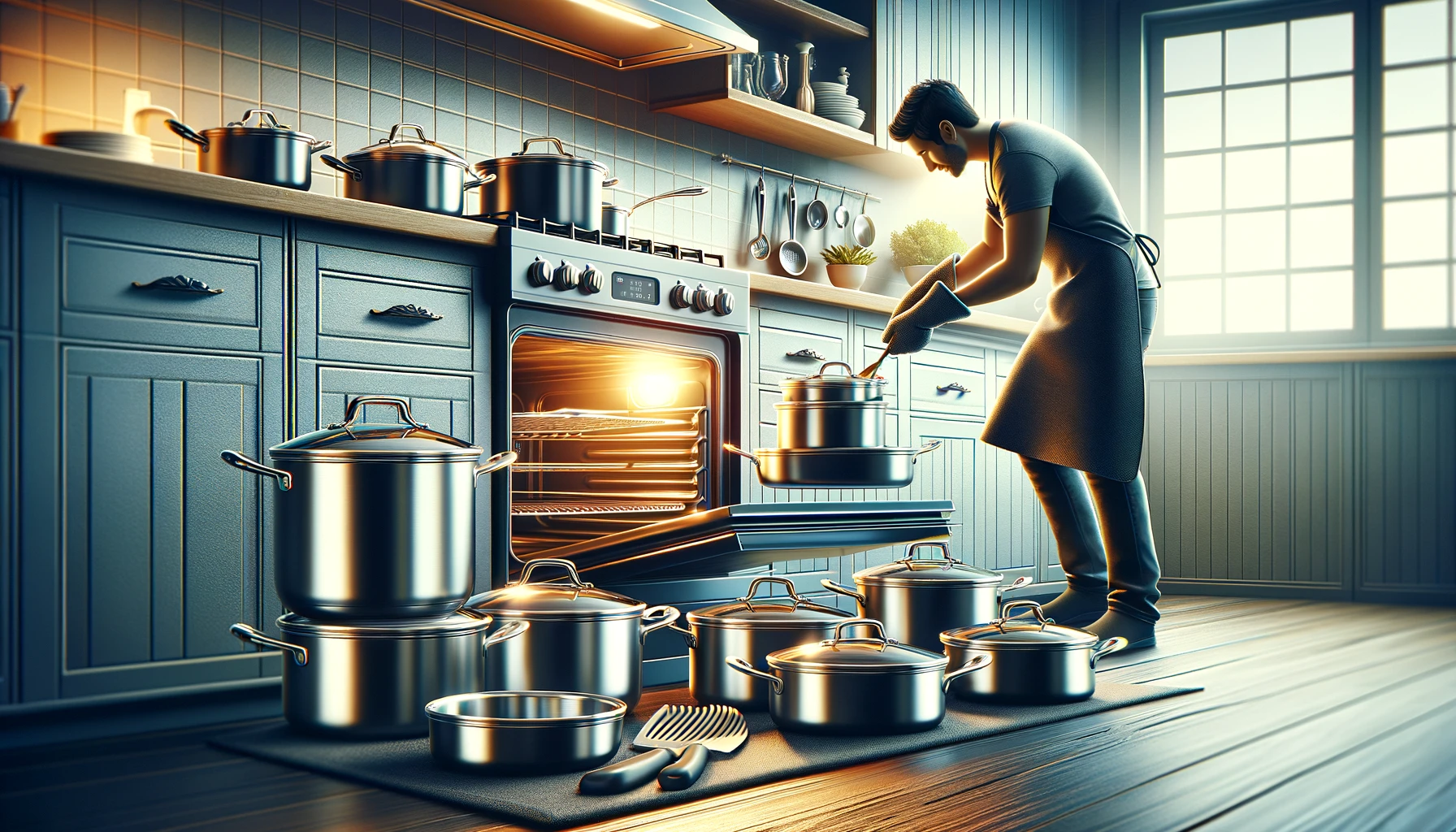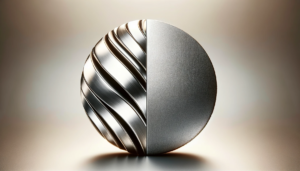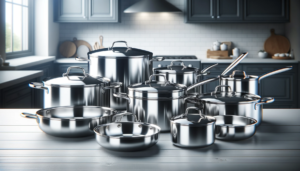Have you ever wondered if your expensive All Clad pots and pans can safely go into the oven for baking projects?
All Clad is known for its durable and high-quality construction, but not all lines are equally oven-safe.
Let’s dive into the key things to know about using All Clad cookware in oven, from tips for safety to signs of heat damage.
Can All Clad Go in the Oven?
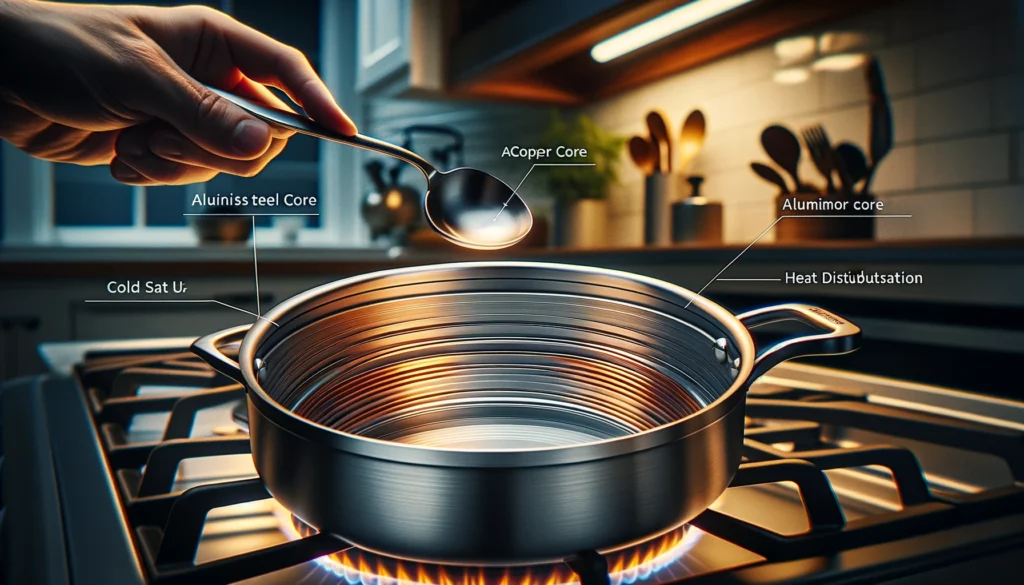
The short answer is yes, most All Clad cookware can safely go in the oven when used properly.
Specifically, the durable stainless steel construction and tightly bonded layers of aluminum or copper core All Clad lines make them oven-safe up to certain temperatures.
For example, Copper Core can handle up to 500°F, while D3 and D5 withstand over 600°F.
However, while all All Clad is designed for stovetop durability, not all products are equally equipped to enter ovens.
We’ll explore the specifics in greater depth below, but factors ranging from materials to recommended racks impact results.
When in doubt, check your model’s guidance.
What is All Clad Cookware?
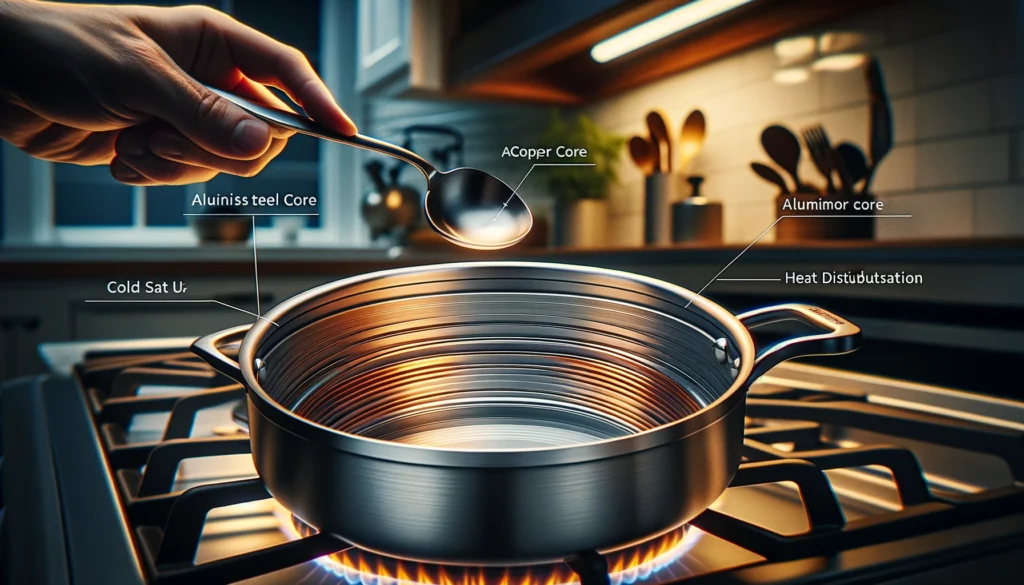
All Clad is a popular brand of high-end, multi-ply stainless steel cookware that is known for its even heating, durability and oven safety.
The key to All Clad’s performance is its layered construction, with a thick aluminum or copper core sandwiched between layers of stainless steel.
This allows the pans to combine the durability and ease of cleaning of stainless steel with the conductivity and responsiveness of aluminum or copper.
Many All Clad pans feature flared edges, polished cooking surfaces and riveted stainless steel handles designed to withstand high oven temperatures.
When shopping for All Clad, you may notice different product lines like Copper Core, D3 and D5.
The numbers refer to the number of alternating layers of aluminum and stainless steel in each pan.
In general, the more layers, the better the heat distribution and response.
However, not all All Clad products are equally oven-safe, so it’s important to check specifications.
Checking the Manual For Oven Safety

Before using any All Clad pan in the oven, it is essential to consult the manual or product specifications to check the recommended oven safe temperatures and times.
This information can usually be found on the All Clad website or in the documentation included with your cookware.
Do not assume that all All Clad products have the same oven safety profile.
Some product lines, such as Copper Core, have lower maximum oven safe temperatures compared to triple-ply lines like D3 and D5.
Exceeding the recommended limit can damage the pan and compromise its performance and durability down the road.
Checking each pan’s manual can prevent accidentally ruining an expensive piece of cookware.
Differences Between All Clad Lines

As mentioned previously, not all All Clad pans are equally oven-safe.
The various product lines differ in their construction, materials and ability to withstand oven temperatures:
Copper Core
The Copper Core line features a thick copper core secured between two layers of stainless steel.
The copper provides superior responsiveness and control, but it also limits the Copper Core’s oven safety to 500°F.
Exceeding this temperature can cause the pan to warp.
D3 & D5
The D3 line is triple-ply, with an aluminum core and three alternating layers of aluminum and stainless steel.
The D5 line uses five layers instead of three, providing even better heat distribution.
Both the D3 and D5 products can safely handle oven temperatures up to 600°F.
Other Lines
Other All Clad lines like BAKE, LTD and MC2 have their own oven safe guidelines.
The bonded stainless steel and aluminum construction of MC2 makes it oven safe up to 500°F.
Non-stick releases used on some bakeware may reduce oven limits.
Always defer to the manual for oven guidance.
Tips For Using All-Clad In The Oven

Presuming your All Clad pan meets oven safety requirements, here are some useful tips for getting the best results:
Preheating is Essential
All Clad pans need time to acclimate to oven temperatures.
Place them in a cold oven, then turn on the heat.
This prevents excessive expansion that can warp pans.
Let the oven preheat fully before putting any All Clad pans inside.
Use Recommended Oven Racks
All Clad manuals recommend certain rack positions.
Usually middle racks are best to promote air flow around and under pans.
Placing pans too close to the top broiler may exceed temperature limits.
Refer to your model’s guidance.
Lift Out Pots Using Grippers/Mitts
The handles and sides of All Clad pans get extremely hot when used in the oven! Use specially designed oven mitts or grippers to safely remove hot pots and pans.
These provide protection and stability when retrieving bakeware.
Trying to grab hot All Clad pans with just regular pot holders can lead to accidents.
Allow to Cool Before Washing
Rapid temperature changes can damage or warp All Clad oven pans.
Allow them to come to room temperature before washing after baking.
Plunging hot pans into water leads to material expansion and contraction that strains metals over time.
Avoid Oven Cleaner Chemicals
Caustic oven cleaners containing lye or bleach can corrode stainless steel over time.
Use a gentle soap and water instead to clean All Clad pans after oven use.
Non-abrasive scrub pads also safely remove baked-on residue without damaging interiors.
Following these oven use tips will keep your All Clad in good cooking condition for years.
Signs of Damage to Look For

While All Clad is designed to withstand oven use when proper precautions are followed, you should still inspect your pans carefully for the following signs of damage:
Warping and Changes to Shape
Excessive heat exposure in the oven can cause All Clad pans to warp or become permanently misshapen.
Gently spin the pan on a flat surface to see if it lays perfectly flat.
Even subtle warping during cooking can lead to hot spots.
Changes to Interior/Exterior Surface
The stainless steel surface may take on a rainbow colored tint or small pockmarks if overheated in the oven.
This indicates erosion and loss of the protective chromium oxide layer that provides non-stick performance.
Pitting or exterior discoloration also suggests damage.
Differences in Performance
A damaged All Clad pan may exhibit uneven heating results, stubborn hot spots or difficulty spinning/rotating during stovetop cooking.
Food might stick more stubbornly as well.
These performance changes indicate loss of structural integrity from oven overexposure.
When in Doubt, Stop Oven Use
At the first sign of warping, surface alterations or performance decline, refrain from future oven use and contact All Clad if still under warranty.
Continuing to use a damaged All Clad pan, even just on the stovetop, can be unsafe if structural issues emerge.
The damage could worsen quickly.
Carefully checking for subtle changes to shape, surface or performance allows early detection of heat damage from oven use.
Discontinue all use immediately if any issues emerge and seek a replacement if under warranty.
This preserves safety and quality results.
Conclusion
In conclusion, most All Clad cookware is oven-safe when used properly, but it’s essential to verify recommended temperatures for each specific product.
Exceeding oven limits can quickly damage the pans.
With routine inspection for warping and changes in performance, your All Clad can deliver delicious baking results for years when handled with care.
